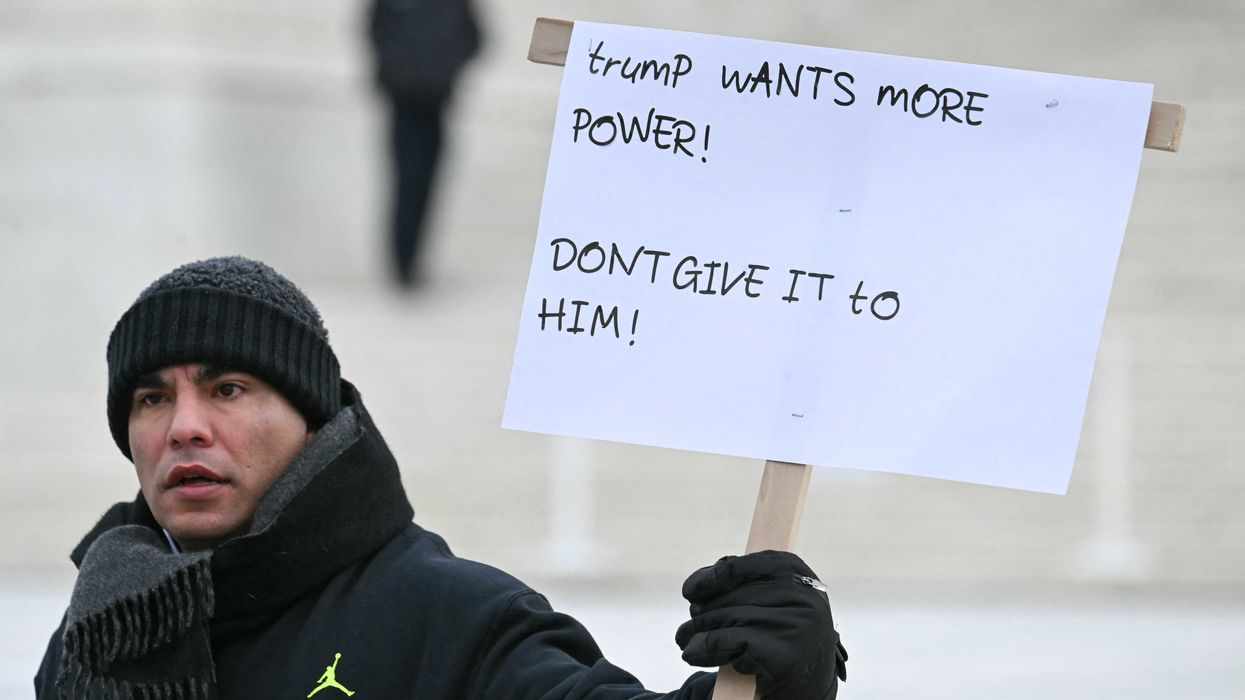GLENN: So I have to tell you, I'm -- I am -- I'm uncomfortable with this next -- with this next interview in some ways, and I think you'll understand once you hear what it is.
But John McNaughton is an artist. He is -- has been controversial over the last few years. But he -- he -- he paints these amazing paintings that tell stories. Tell stories of, you know, where we are as people. And he ties history and current events together. You'll recognize his paintings the minute you see them.
He's just done a painting that OUR did not request. It wasn't a commission. Because it's made all of us -- we're really flattered, but also really uncomfortable. He's made this painting, and he has made it and donated it to raise funds to help out the -- the stop of slavery around the world.
And it is the -- the modern day abolitionist side by side with the original abolitionists in a very powerful painting.
And welcome to the program, John McNaughton. How are you, sir?
JOHN: Hi, Glenn, I'm good. Thank you.
GLENN: I hope you don't take my -- I don't even know how to explain this. I guess my shyness on this as an insult. I'm honored that you would paint this and even include me in this. But it's really awkward.
JOHN: Yes, I know. You know, Tim Ballard told me that you would feel that way. HEP he told me 100 percent. You don't have the spotlight, but you're in there.
GLENN: Yeah, yeah, yeah. So Tony Robbins is in there. Mike Tomlin from the Steelers is in there. Montel Williams. Mia Love. Ashton Kutcher is there. Albert Pools is there. Eric Metaxas. HEP it's some of the really great people of our day.
STU: And Glenn as well. Glenn as well. So all the great people, plus Glenn.
GLENN: Yes. And I'm on the edge, so you can kind of airbrush me out of this.
So what was your inspiration? And tell me about why you did it.
JOHN: Yeah, sure. Someone who is friends with Tim Ballard was talking to me one day about the organization. And I had never heard about it before. And as he explained it to me, you know, I had this image in my mind, kind of where I saw this rescuer, or line of rescuers, you know, carrying children, walking down the tracks, you know, the underground railroad. And on both sides of the tracks, you had different abolitionists holding their lamps, guiding away. And I was just really taken by the idea.
And I thought, you know, this could actually be a project that could help the cause to save children. And, you know, I always tried to do paintings that I think will make a difference. But this one, I mean, to save a child, it was overwhelming. And so I just started painting it. And after I had gotten so far, my friends who knew Tim Ballard contacted them. And then from there, Tim gave me a lot of his suggestions of who should be in the painting.
GLENN: So we have just partnered with Tim Ballard. In case you're listening and don't know who Tim Ballard is, we've just partnered with the Nazarene Fund. We've been a partner. We raised the original money to open up, you know, Operation Underground Railroad, rescue our children.
It is a worldwide effort to stop slavery. And he is now the CEO of the Nazarene Fund as well.
And we are going to start going in, in a big way, next year. Rescuing slaves in the Middle East. These Christians that have just been left to die by the rest of the world. To live be sure life in slavery. And we're going to really double down and start rescuing them next year.
It's quite an amazing thing that's going on.
When you were picking -- when when you were picking the people -- the modern day -- or, I'm sorry, the earlier -- the original abolitionists.
JOHN: Yeah.
GLENN: How did you decide who would be in there?
JOHN: Well, we just looked at the history of, you know, abolitionists in the past and people who had interesting stories. And talking with Tim, he said, oh, you have to have this person. You got to have this person. And, you know, some of the names I recognized. A lot of them I didn't. People like William Wilberforce, you know, I remember seeing him in the movie Amazing Grace, you know, his story. But there was this woman named Harriet Jacobs that I had never heard of that had this remarkable story that Tim told me about. I think they only learned about her in the last six, seven years. And so she's in the picture. And just a lot of different stories that I just didn't know about. And they have an e- book that comes with the painting where people can learn all the details of each person in the picture and why they're there. It's pretty amazing.
GLENN: So you can buy it at ourpainting.org. Our painting.org.
How many of these are you selling or how much are they?
JOHN: They start at $29. And then they go up. You can get a nice framed one. And 100 percent of all the profits, everything is going to rescue children. And Tim told me it takes about $2,000 to rescue a child and to help rehabilitate them and go through that process.
And so we're hoping that we can just sell a lot of these prints and to -- to -- to rescue, you know, thousands of children, if we can.
GLENN: Well, I know that you left Tony Robbins in disguise because he goes on operations in disguise. And he thanks you. I wish you would have painted a beard on me to disguise me as well. It's an honor to have been thought of as part of that. And I tell Tim all the time, and he hates when I say this, I do believe that they're going to build statues of him someday because of the work that he has done. He is changing -- he is the modern day abolitionist for sure. And I sure appreciate your help. Thank you, John, so much.
STU: And, John, we really appreciate your efforts to not only stop slavery in the world, but also your efforts to make Glenn feel uncomfortable.
GLENN: Thank you. Thank you.
JOHN: I do my best.
GLENN: Well, thank you. You did a good job. John McNaughton. Thank you so much. I appreciate it. You see the painting and purchase the painting. It would be a good Christmas gift.
You might want to frame it in a little bit. There's some shady characters on the outside of it. But ourpainting.org. Ourpainting.org. All of the proceeds go to help rescue slaves all around the world, including the Middle East and the Nazarene Fund.

 JIM WATSON / Contributor | Getty Images
JIM WATSON / Contributor | Getty Images
 Joe Raedle / Staff | Getty Images
Joe Raedle / Staff | Getty Images AASHISH KIPHAYET / Contributor | Getty Images
AASHISH KIPHAYET / Contributor | Getty Images Harold M. Lambert / Contributor | Getty Images
Harold M. Lambert / Contributor | Getty Images